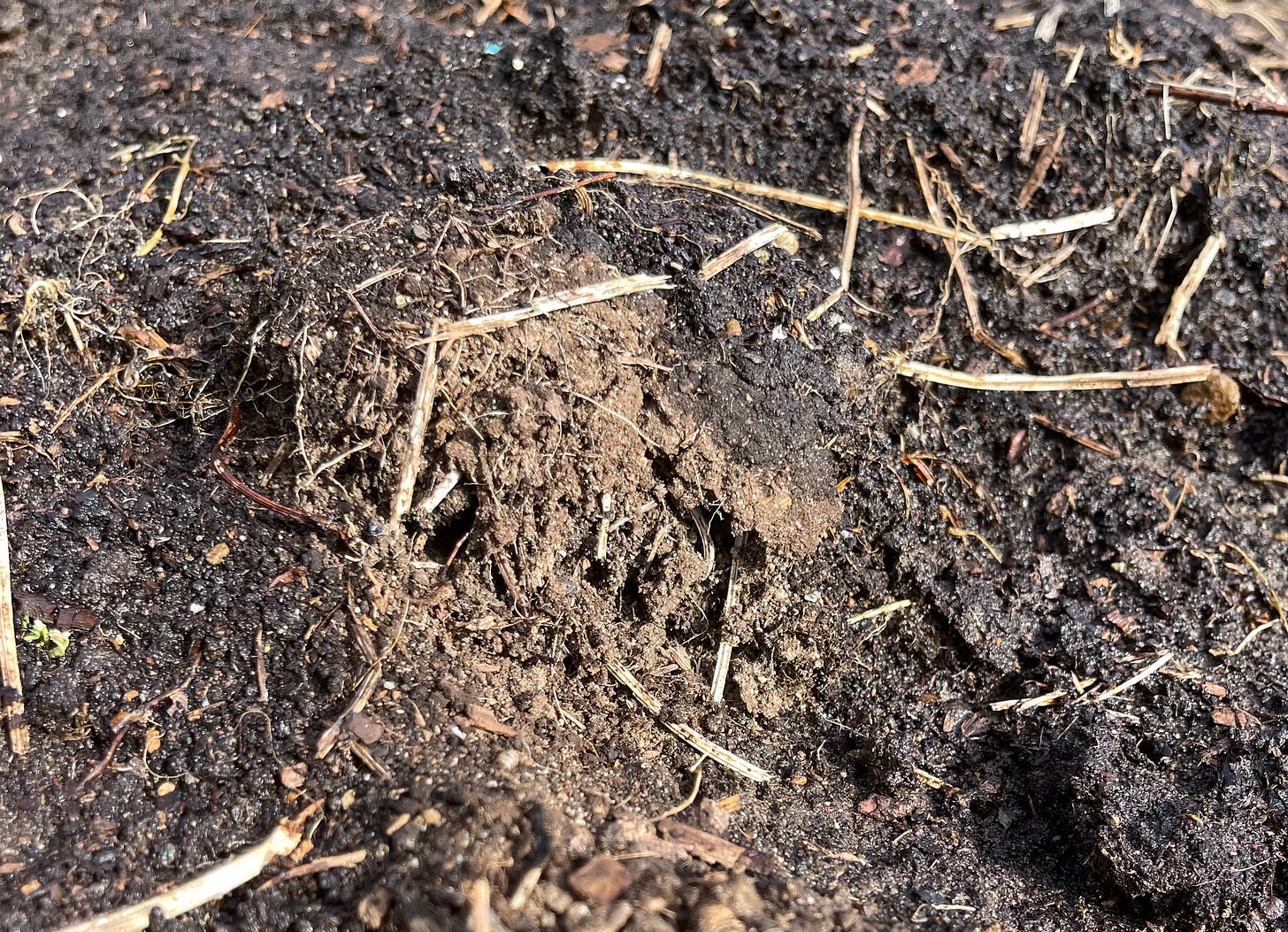Resilience Is Not Simple
...and the way forward is not absolute
We are halfway through a 4-part series on SOIL this week. With two sessions behind us, our heads are full of questions, observations, and ideas. Taught by Raelani Kesler, who worked with us as a field manager back in 2018 and 2019 and is now working on her PhD at the University of British Columbia, the information is deeply relevant and gloriously complex. We’re learning from every minute of it and we’ll share more in a later post — but for now, one of the most impactful perspectives I’ve gained is this…
There are no specific practices built into the definition of healthy soil.
Wait. You mean it doesn’t require a no-till approach? Doesn’t depend on perennials or native plants? It doesn’t demand intense rotational grazing or regular doses of compost tea?
That’s right. We humans like to lay down absolutes…but within the complexities of life, there are few if any absolutes to be found. Not even in how we grow food. Raelani shared with us this definition. “Soil health is the capacity of a soil to function, within land use and ecosystem boundaries, to sustain biological productivity, maintain environmental quality, and promote plant, animal, and human health. (Doran & Parkin, 1994).
In other words, the methods we use in farming may lead us more directly to soil health or farther away from it, but in and of themselves, their relative worth is tough to determine.
Why?
The second most impactful perspective I gained now seems obvious, but I just hadn’t given it much thought before: soil texture and soil chemistry are based on the type of rocks our soils are made from. Here on Whidbey Island, our geologic history includes at least six advances and retreats of the Cordilleran Ice Sheet. Each brought rock from far away places, and with weight and motion each advance and retreat ground such rock into variable sized particles (sand, silt, clay). Weathering from wind, freezing and thawing, and movement of water added to the process over the millennia. How and where these resulting particles settled, and into what existing and evolving ecosystems, matters. Perhaps particle sizes get sorted in much the same way everywhere, but the particles come from different mineral recipes and thus will have different charged particles and ions. This leads to differences in how water moves through them, and how nutrients are made available to plants.
So again, back to farming methods and soil health — context matters as much if not more than farming practices. What are you starting with? What are you trying to achieve? How much time do you have? How much money can you spend? What constraints do you face?
In a recent post, I mentioned that at the Organic Farm School, we work to prepare folks to enter the food growing economy by building on their curiosity, bolstering it with science, and multiplying it with experience in the field. The conversations we’re having about soil are a clear example of “our work.”
Sometimes, in this age of information overload and social media virtue signaling, our desire for “3 Easy Steps” to get us to a more resilient world can lead us to simplify topics to the point of misinformation. That’s where slow-moving, replicable science can join forces with cultural/indigenous knowledge, helping us identify and digest the complexity that actually keeps us alive on the planet.
So much more to share, but for today, maybe that’s enough.


